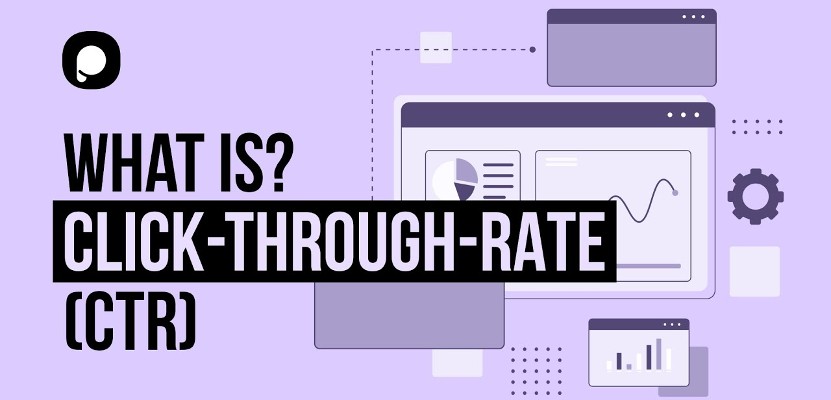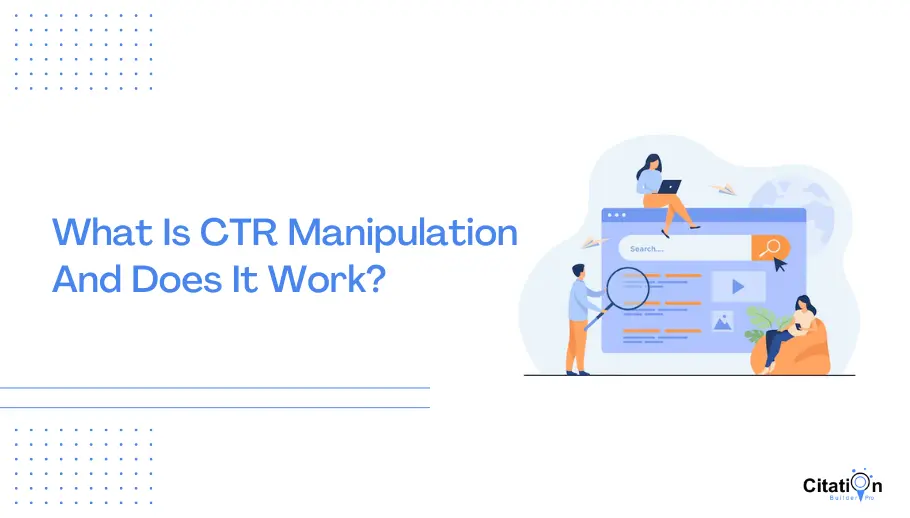Accomplishing Success With Targeted CTR Control
The optimization of click-through prices (CTR) is an important endeavor for brands aiming to improve their digital visibility and make best use of involvement. Targeted CTR control encompasses a variety of techniques, from data-driven ad positionings to the development of engaging web content tailored to certain target markets.
Comprehending Click-Through Fees
Click-through prices (CTR) function as an essential metric in electronic advertising and marketing, reflecting the efficiency of on-line content in driving individual involvement. This metric is determined by splitting the variety of clicks an advertisement or link gets by the complete variety of impressions, shared as a percentage (CTR Manipulation Service). A greater CTR shows that the content resonates well with the target market, prompting them to take activity
Comprehending CTR is necessary for online marketers aiming to optimize their projects. Various elements influence CTR, consisting of ad placement, design, and the importance of the web content to the target market's interests. Compelling headings and aesthetically appealing photos can dramatically boost the chance of customers clicking on a web link.
Moreover, the context in which the content is provided plays an essential function in determining CTR. Inevitably, a thorough understanding of CTR empowers marketers to refine their strategies, ensuring that digital campaigns achieve their preferred results successfully.
Value of CTR Adjustment
In the affordable landscape of electronic marketing, the adjustment of click-through rates (CTR) has actually become an essential approach for enhancing project efficiency. CTR acts as a crucial efficiency indication, mirroring the efficiency of on the internet promotions and web content in attracting user involvement. A greater CTR not only indicates better rate of interest however likewise can result in boosted search engine rankings and reduced cost-per-click (CPC) prices, therefore optimizing general advertising budgets.
The significance of CTR manipulation lies in its capacity to inform marketing professionals concerning customer choices and habits. By assessing CTR data, businesses can identify which elements of their projects reverberate most with their target market. This insight permits for more educated decision-making and the appropriation of sources to the most effective channels.
Moreover, efficient CTR manipulation promotes an affordable advantage. Brands that continually achieve greater CTRs can outshine competitors, securing an extra considerable market visibility. In an era where consumer attention is short lived, recording clicks equates straight to boosted leads and conversions, ultimately driving business development. Hence, understanding CTR control is not simply advantageous; it is essential for attaining sustained success in electronic marketing initiatives.
Strategies for Targeted CTR
Accomplishing targeted click-through rates (CTR) calls for a critical method that incorporates different techniques customized to specific audience segments. One effective method is enhancing ad positionings by using information analytics to identify high-performing channels. By concentrating initiatives on these channels, marketing professionals can enhance presence and rise interaction.
An additional vital method is crafting engaging headings and phones call to activity (CTAs) A/B testing different variations can expose which combinations reverberate most with the target market, thus driving higher CTR. Additionally, incorporating aesthetic elements such as captivating photos or videos can substantially improve charm, making content extra shareable and interesting.
Customization also plays an important function; making use of customer data to create customized content can promote a feeling of importance, motivating clicks. Leveraging social proof through testimonials and user-generated material can build depend on, inevitably improving CTR.
Analyzing Individual Habits
 Recognizing user behavior is essential for optimizing advertising and marketing approaches and improving overall performance. By analyzing exactly how users communicate with content, marketers can acquire beneficial insights into choices, inspirations, and pain points. This understanding allows the growth of even more targeted projects that resonate with specific audience sections.
Recognizing user behavior is essential for optimizing advertising and marketing approaches and improving overall performance. By analyzing exactly how users communicate with content, marketers can acquire beneficial insights into choices, inspirations, and pain points. This understanding allows the growth of even more targeted projects that resonate with specific audience sections.To properly analyze user actions, various tools and methods can be employed. Web analytics systems give information on user engagement metrics such as click-through rates, bounce prices, and time invested in web page. Heatmaps and session recordings allow marketers to picture customer communications, revealing which components attract attention and which may be neglected.
In addition, customer responses via studies and responses forms can use qualitative understandings, enhancing the understanding of user belief and contentment. Segmenting users based upon passions, actions, and demographics can additionally fine-tune targeting initiatives, tailoring content to fulfill varied requirements.
Ultimately, constant analysis of user actions is important for adjusting marketing approaches in real-time. As customer patterns advance, remaining in harmony with these adjustments makes sure that campaigns continue to be appropriate and effective, fostering a deeper link with the target market. This fundamental understanding sets the phase for the effective implementation of targeted CTR adjustment strategies.
Gauging Success and Readjusting Strategies
Gauging success in targeted marketing projects needs a calculated LinkDaddy CTR Manipulation strategy that incorporates efficiency metrics with ongoing analysis. Trick performance signs (KPIs) such as click-through prices (CTR), conversion prices, and customer acquisition expenses should be monitored constantly to gauge the performance of manipulation approaches. By developing a standard, marketing professionals can analyze modifications in CTR and recognize patterns that suggest effective interaction or prospective imperfections.
On a regular basis evaluating these metrics enables the timely adjustment of techniques. If a specific project reveals a considerable decline in CTR, it might signal the requirement for imaginative modifications or a reevaluation of targeting criteria. Employing A/B testing can additionally improve methods by contrasting variants of advertisements or landing pages, offering understanding into what reverberates ideal with the target audience.
In addition, incorporating qualitative feedback via studies or user meetings can supplement measurable information, using a thorough sight of audience perception. Inevitably, the capacity to iteratively assess and improve techniques based on real-time information promotes a much more responsive advertising technique, ensuring that campaigns continue to be lined up with business objectives and audience preferences. This flexible technique is important in accomplishing sustained success in targeted CTR control.
Conclusion
Finally, targeted CTR manipulation is important for optimizing digital advertising and marketing efforts. By understanding click-through rates and utilizing tactical techniques, brands can efficiently improve individual interaction and drive conversions. Continual analysis of user behavior and attentive dimension of performance indications assist in prompt modifications, making certain positioning with consumer choices. Ultimately, effective CTR manipulation not description only raises presence yet also cultivates trust fund and trustworthiness, thereby adding to sustained growth in affordable markets.
 Targeted CTR manipulation includes an array of methods, from data-driven ad positionings to the growth of engaging content customized to certain target markets.Click-through rates (CTR) offer useful reference as a critical metric in electronic advertising, mirroring the efficiency of online web content in driving individual engagement. A greater CTR shows that the content resonates well with the target audience, motivating them to take activity.
Targeted CTR manipulation includes an array of methods, from data-driven ad positionings to the growth of engaging content customized to certain target markets.Click-through rates (CTR) offer useful reference as a critical metric in electronic advertising, mirroring the efficiency of online web content in driving individual engagement. A greater CTR shows that the content resonates well with the target audience, motivating them to take activity.CTR serves as a key performance indicator, showing the efficiency of on-line ads and web content in drawing in individual involvement.In conclusion, targeted CTR control is vital for enhancing electronic advertising efforts.